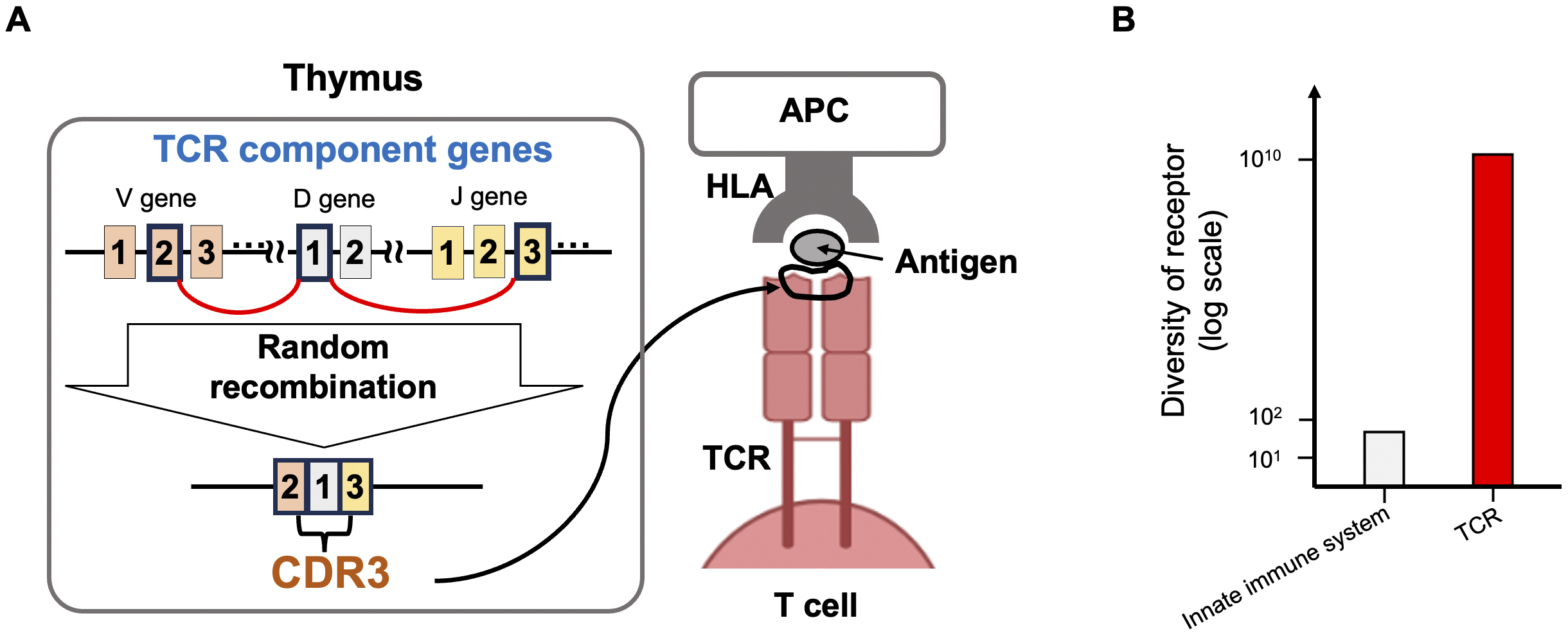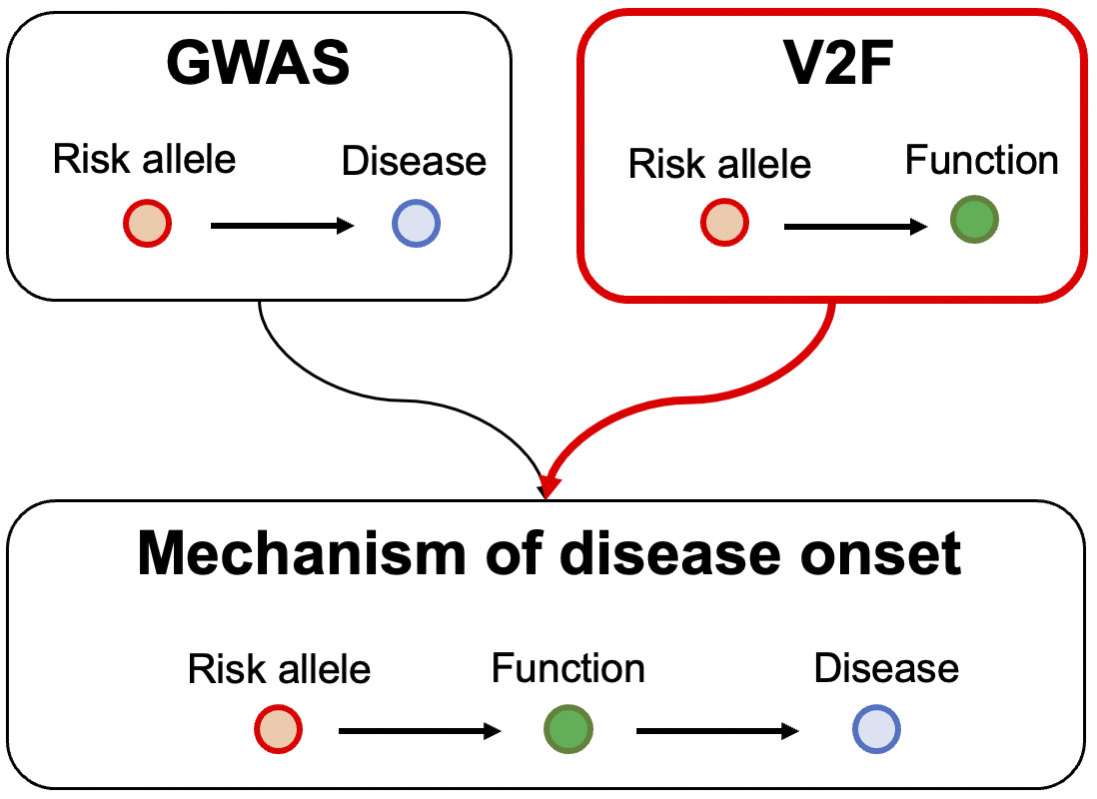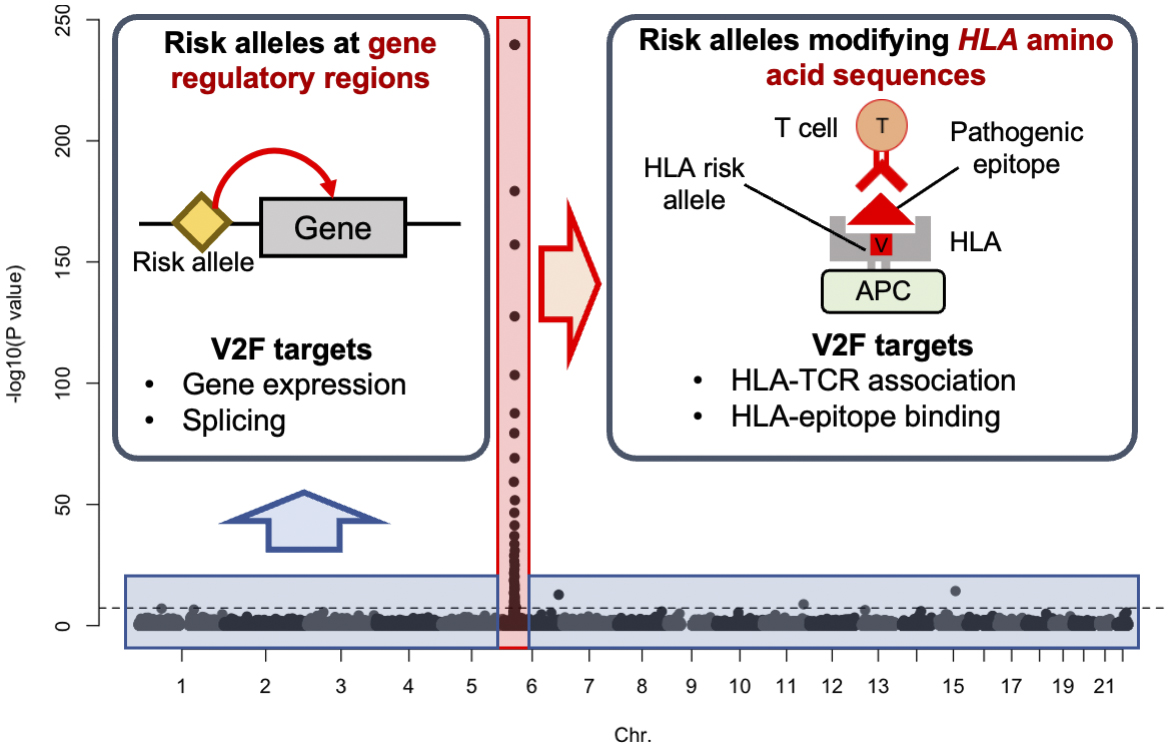Figure 1. Basic information about T cell receptor.
A. In the thymus, TCRs are generated through the random recombination of their component genes: V, D, and J genes. At their junctional region, several nucleotides are randomly added or deleted, resulting in significant diversity in this region. This junctional region is known as CDR3, which directly recognizes antigens presented on HLA molecules.
B. The diversity of TCR receptors compared with innate immune system receptors.
APC: antigen-presenting cell; CDR3: Complementarity-determining Region 3; TCR: T cell receptor.
From: Big Data Science on T Cell Receptor-mediated Immune Regulation

Figure 2. GWAS and V2F study.
GWAS establishes the link between risk alleles and disease, while V2F connects risk alleles to biological function, such as TCR sequence patterns discussed in this manuscript. By integrating GWAS and V2F findings, we can hypothesize the causal mechanisms underlying disease onset.
GWAS: genome-wide association study; V2F: variant-to-function.
From: Big Data Science on T Cell Receptor-mediated Immune Regulation

Figure 3. Rheumatoid arthritis risk allele distributions and functions.
On the back, the results of the rheumatoid arthritis GWAS are presented. The X-axis indicates chromosomal position, while the Y-axis represents −log10(P value) of the GWAS, suggesting the strength of the association. Numerous but weak risk alleles located in the non-HLA regions are found in gene regulatory regions, such as enhancers, potentially affecting the expression of nearby genes. In contrast, a few very strong risk alleles in the HLA region modify HLA amino acid sequences, potentially influencing epitope binding efficiency and TCR thymic selection.
APC: antigen-presenting cell; GWAS: genome-wide association study; TCR: T-cell receptor.
From: Big Data Science on T Cell Receptor-mediated Immune Regulation

Figure 4. HLA risk alleles increase the frequency of autoreactive TCR.
This illustration presents our hypothesis as discussed in the main text. Donors with HLA risk alleles have a higher prevalence of T cells with autoreactive TCRs in their peripheral blood compared to donors without HLA risk alleles, predisposing them to autoimmune reactions. In patients with autoimmune diseases, T cells possessing autoreactive TCRs undergo clonal expansion, driving the pathology associated with these diseases. APC, antigen-presenting cells.
APC: antigen-presenting cell; TCR: T cell receptor.
From: Big Data Science on T Cell Receptor-mediated Immune Regulation

Figure 5. TCR amino acid features define T cell fate.
This illustration presents our hypothesis, as discussed in the main text. When a T cell has a TCR enriched with specific amino acid features (i.e., high TiRP score), that T cell is more likely to differentiate into Tregs rather than Tconvs. The illustration of the thymus was created using BioRender.
Tconv: conventional T cell; TCR: T cell receptor; TiRP: TCR-intrinsic regulatory potential; Treg: regulatory T cell.
From: Big Data Science on T Cell Receptor-mediated Immune Regulation





